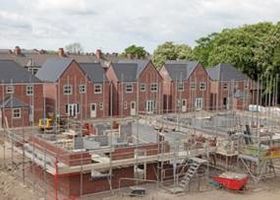
New public housing work decreased by 20.7%, while new private housing compounded the industry’s problems shrinking by 12.1%, compared to a year ago.
The figures dealt yet another blow to the Government, which is trying to pull out all the stops with policies designed to stimulate social and private housing.
But the weight of deep public sector spending cuts is dampening overall house building activity.
The picture for the wider industry remained bleak with total construction output down 11.6% in August compared to last year, but relatively flat month on month.
Among all sectors, only private industrial work showed an improvement.
The new data will feed into the government’s third quarter GDP figure, which is set to be revealed later this month.
Mike Leonard, Director of the Modern Masonry Alliance, said: “These figures reflect falling demand for building materials including brick and block with more factories closing reducing capacity, skills and jobs whilst damaging the long term future of UK PLC. It is time for the Government to take bold action to massively increase housing delivery.
“We have political consensus that building homes is the route to jobs and growth so what is stopping Government from pulling the levers. Our industry is ready and waiting to deliver the jobs, homes and growth our country so badly needs!”




















































